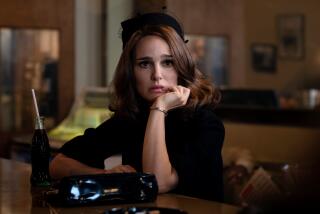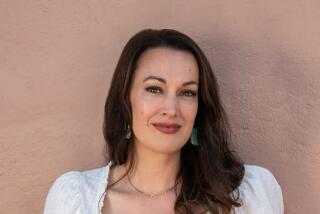Book review: ‘The Most Dangerous Thing’ by Laura Lippman
- Share via
The Most Dangerous Thing
A Novel
Laura Lippman
William Morrow: 352 pp., $25.99
Beware the wild child. That’s the message of Laura Lippman’s “The Most Dangerous Thing,” a novel that occupies the unlikely middle ground between thriller and coming-of-age saga, shifting from present to past as it tells the story of five childhood friends and the fateful night in 1979 that changed their lives.
Lippman is known for her mysteries featuring Baltimore private investigator Tess Monaghan, and though this character makes a brief but pointed appearance in these pages, the book comes billed as a stand-alone. Rather, the protagonist, if we can call her that, is Gwen Robison, a former newspaper reporter turned editor of a Baltimore city magazine who, as the action begins, is caring for her elderly father. She’s also looking to get out of a stultifying marriage, wondering how, in her early 40s, she has lost any semblance of control over her life.
Loss of control is a theme in “The Most Dangerous Thing,” as it is in many of Lippman’s novels, which balance plot and social observation, offering mysteries that comment on the world. That has to do with Lippman’s background; a former reporter for the Baltimore Sun, she is acute on the shifting social landscapes of her hometown and especially on the fate of newspapers, which come up as a subtext in her work.
“If he had followed his heart, he might have been one of the lucky ones, safe and sound at a big national newspaper when all the other papers started to shrink,” she writes of one character, who gives up reporting for the murky netherworld of corporate communications.
This air of compromise, in fact, marks everyone in the book. It’s a matter of necessity, of pragmatics, but there is also a deeper quality of drift with roots in their shared history. “You think it’s dangerous to look closer at this. I think it’s dangerous to look away,” Gwen says, after the friends have reconnected to parse their experience. The point is that nothing is ever put away, not any of it, and that who we were continues to affect who we are, leaving a residue that can’t help but complicate our adult lives.
Such complications emerge at the novel’s opening, as Gordon Halloran — a.k.a. Go-Go — leaves a Baltimore tavern after a drunken evening and plows his car head-on into a highway barrier wall. It might be an accident, but Gwen, as well as Gordon’s brothers Sean and Tim, suspects otherwise, and as Lippman tells their overlapping stories, she reveals the connections between them, connections as deep as those of blood. In the 1970s, they grew up together in the same remote corner of the city, a not-quite-urban, not-quite-suburban neighborhood known as Dickeyville. Here, with another girl named Mickey, Gwen and the Hallorans prowled the woods and found mischief their parents didn’t want to see.
“It was the era of trickle-down economics,” Lippman writes, “but if you asked us, we would have said that adulthood, too, was a process of trickling down, that we picked up the scraps of adult life as surely as we went behind our parents at their dinner parties and stole sips from their glasses, bites from their plates. We shook cigarettes free from open packets, took tiny swigs from bottles in the liquor cabinet. They knew, they had to know, because we know everything our children do, no matter how sly they think they are. The difference is that they approved.… It’s not a rationalization, but a truth: they encouraged us to lie, to keep things from them, to protect them from what we knew.”
That’s a telling passage, both for what it says about Lippman’s aspirations for “The Most Dangerous Thing” and about the ways the novel doesn’t always measure up. On the one hand, she effectively evokes the wildness of kids alone in a landscape of their own making, which is the essential conflict of the book. Out in the woods, things happen — Gwen, Mickey and the Hallorans meet a homeless man they nickname Chicken George, and what forms in that relationship are their personalities, their very futures. They learn what it means to rely on one another, and also what it means when that reliance falls apart. “This was us,” Gwen recalls. “The five points of a star.… Now look at the center. When you draw a star this way, it forms a pentagon at the center. That was Chicken George. Not just him, but the woods, and our adventures there.”
And yet there is also something a bit headlong, a bit unformed about Lippman’s writing, from the reference to “trickle-down economics,” which would not come into vogue until the early 1980s, to her vagueness over what parents do and do not know, which plays a role in the novel’s denouement. These are not disastrous lapses, but they raise questions about her command of her material, about what, exactly, is at stake. This only grows more pronounced as the choices narrow, for the author and her characters, who must reckon with their adolescent improprieties in those woods of long ago.
Here, we see that tension again, between past and present, child and adult. But for all that Lippman recognizes the dynamic, she sidesteps its ambiguities, tying up many loose ends too neatly, while leaving others unresolved. Even more, she never gives enough urgency to the book’s 30-year-old mystery, which remains important mostly to its principals, with vestigial implications for the wider world.
This, of course, is the case for almost everyone, whose private dramas play out with limited consequence. Still, it seems opposed to what the novel has in mind, which is to explore the impact of the darkness we all share. As Gwen observes, “[I]t was us, in our naiveté and heedlessness, who were to be feared.” Fair enough, but to be truly wild, “The Most Dangerous Thing” needs a broader sense of menace, one that extends beyond the boundaries of its characters’ lives.
More to Read
Sign up for our Book Club newsletter
Get the latest news, events and more from the Los Angeles Times Book Club, and help us get L.A. reading and talking.
You may occasionally receive promotional content from the Los Angeles Times.








